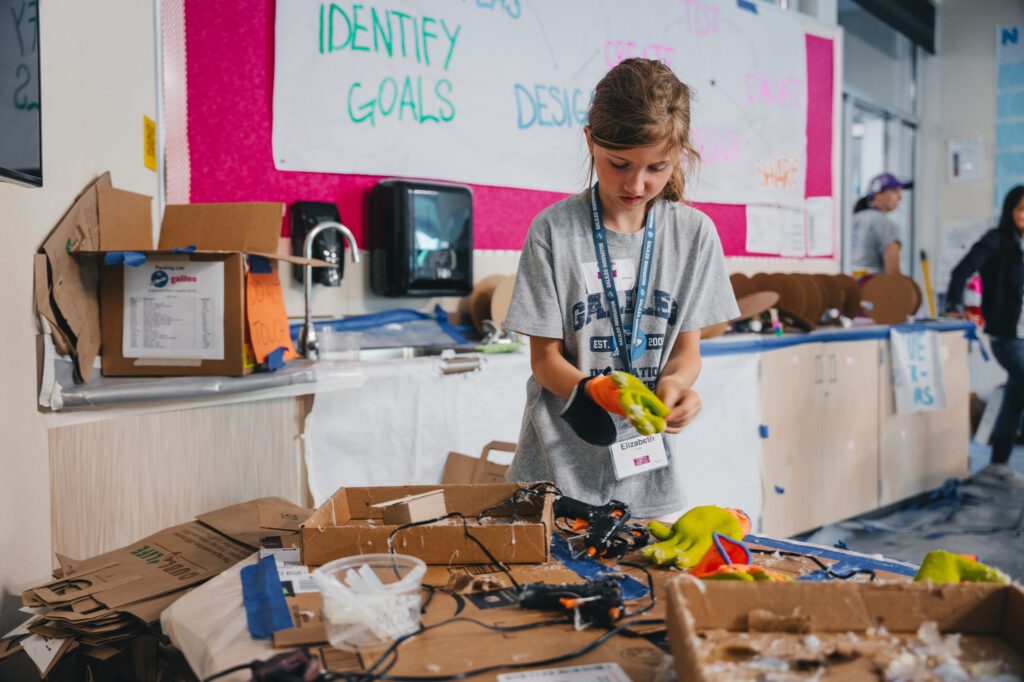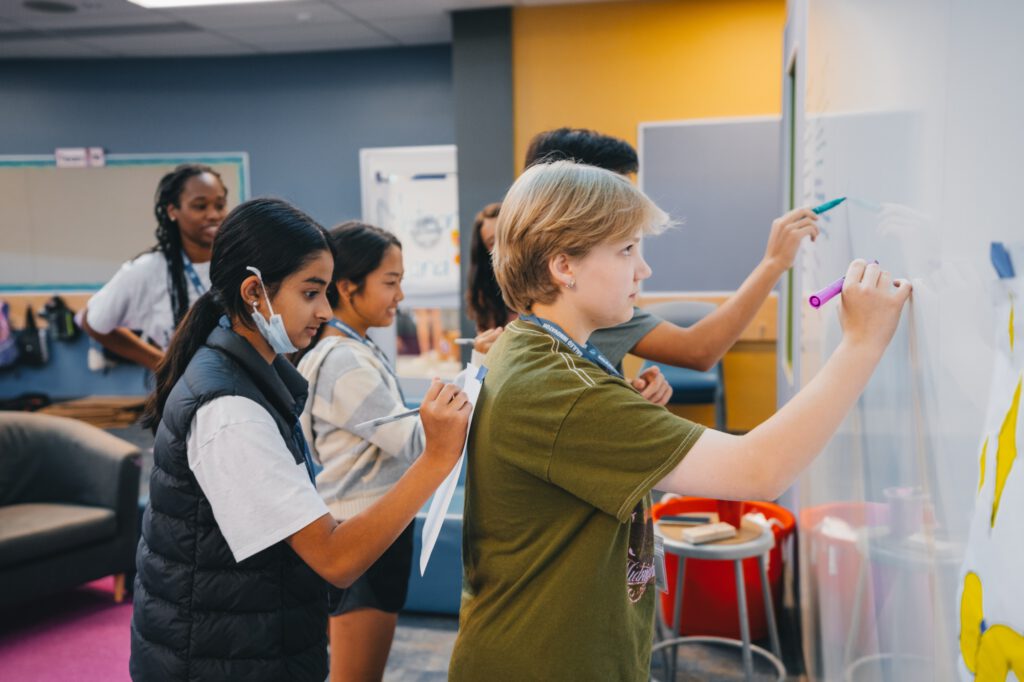Isis Anchalee never expected the backlash she received when her tech company asked her and some male colleagues to pose for recruitment ads. When their photos appeared on posters in BART stations in 2015, negative remarks appeared on social media suggesting that a female “model” was chosen to represent an engineer. But the truth is that Isis is a full stack software engineer, not a model. In a thoughtful response, she posted a photo of herself with the hashtag #Ilooklikeanengineer, which prompted hundreds of thousands of engineers to do the same.
The type of explicit bias Isis and other female engineers experience is only one of the number of reasons why girls leave STEM. There are many prejudices and roadblocks, intentional or not, that serve to discourage girls from pursuing STEM degrees and careers. Adding to the problem is that many girls also lack the support structure that would help them overcome the obstacles they inevitably meet along the way. One thing is clear: for the sake of continued innovation and to adequately prepare them for the certainty of rapidly advancing technology, it is important that we examine the reasons girls leave STEM and consider what we can do to change this unfortunate trend.
What an Engineer Looks Like
Social movements are powerful means of prompting change. Isis’ experience makes it clear that although women have made inroads into many traditionally male-dominated fields, societal bias still exists. By putting diverse faces on the image of an engineer, she continues to challenge existing stereotypes. Her actions highlight the bias that she and many female STEM professionals have experienced in the workplace and in the process of getting there.
To effectively dispel stereotypes, kids must have appropriate models at every stage of development. Debbie Sterling is a female engineer who recognized and acted on this need. She knew so little about the job of an engineer that when her high school math teacher suggested she consider it as a major, she thought he wanted her to drive a train. After completing a degree in mechanical engineering/product design at Stanford, she became determined to challenge gender stereotypes by “disrupting the pink aisle in toy stores” around the world. Her award-winning GoldieBlox books, dolls and building sets fulfill a critical need by introducing very young girls to the fun and excitement of engineering projects.
Supporting Girls Every Step Of The Way
As girls grow, it is important that their image of a female engineer grows with them. Cartoon images and dolls can be a great way to demonstrate this to very young girls, but by upper elementary and middle school, they must see photos, hear voices and meet living female mentors. A study conducted by Accenture and Girls Who Code noted that STEM interest among girls is high in middle school, but drops off sharply in high school, leading to few young women studying computer science in college. To have the greatest impact on increasing the number of female STEM graduates, they propose focusing efforts on middle school girls:
- Girls exposed to computer games and coding in middle school are four times more likely to study computer science in college. Game developers are encouraged to create games that appeal to girls.
- Entertainment media targeted to families portray more male STEM professionals than female by 5 to 1 and more male computer scientists and engineers by 14 to 1 in films. The entertainment industry must address these inequities to help eliminate gender stereotypes.
- 64% of girls study computer science in middle school but only 52% in high school. In addition, 13% of middle school girls learn computer science at camp. Seizing additional opportunities to learn in fun, social contexts ups the enjoyment for girls.
- Availability of these opportunities and supportive, inspiring role models is key to eliminating the drop in participation.
- Confidence levels in girls drop by 30% from age 9 to 14. Ironically, according to Katty Kay and Claire Shipman, authors of The Confidence Code for Girls, it is taking risks, making mistakes and trying again that helps girls build confidence.
- STEM disciplines are often depicted as boring, difficult and not accessible to the average person. This is where a growth mindset comes in; girls must learn to see themselves as competent risk-takers. “I can’t do it,” must become “I can’t do it yet.”
- Forcing kids to choose between participation in STEM courses or the arts, results in many girls (and boys) faced with a no-win decision. STEAM curricula allow kids to experience science, technology, engineering, math and the arts in engaging, real-world projects. Likewise, programs that teach design thinking help kids channel their creative side into science and technological innovation projects.
- Colleges and universities, including Stanford, ranked as the #2 engineering school by U.S. News & World Report, devote considerable resources to recruiting and supporting women from pre-college through successful degree completion. Industry leaders, such as Intel, are making big investments in their future workforce through programs that support kids’ interest in STEM.
A Coordinated Effort To Enact Change
To successfully dispel deep-seated, historical stereotypes will require continuation of the coordinated effort between government, industry leaders and educational institutions. Closer to home, parents must advocate for their daughters and sons, be mindful of their own unconscious biases and elect forward-thinking leaders who have kids’ best interests at heart. They must seek out inclusive programs that celebrate diversity and encourage a growth mindset in order to empower girls and boys to grasp the skills necessary for informed participation in the digital economy. Comfort with our dynamic, technological infrastructure is essential whether kids choose a STEM career or not, and it’s up to us to ensure they are all prepared.
Looking for an inclusive STEAM experience in your area? Check out these camps that support bias-free exploration: San Francisco, Southern California, and Chicagoland. Register for a camp session or sign up for our mailing list to keep up-to-date with camp happenings and innovation resources. Or, for more information about Galileo camps, contact us here.



